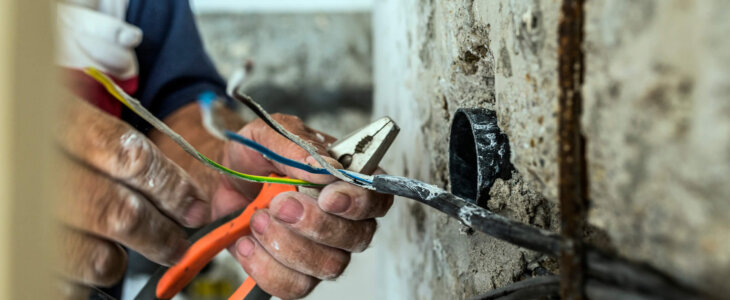Construction workers are at greater risk of electrocution than any other type of employee. In fact, construction workers make up around 60 percent of fatal workplace electrocutions nationwide. Fortunately, most electrocutions on construction sites can be avoided with appropriate equipment and training. In this article, we discuss how to prevent electrocution in construction and maintenance work.
Types of Electrocution
There are many electrical hazards on construction sites in New York. The construction of buildings and other structures often requires workers to deal with complex electrical setups, including exposed wiring and temporary power sources, all of which increase the risk of electrocution and shocks. There most common types of electrocution risks on construction sites are:
- Electric shock
- Burns and arc blast
- Fatal electrocution
- Falls resulting from contact with electricity
Risk Factors
On construction sites, the jobs at highest risk of electrocution are electricians, roofers, laborers, foremen, HVAC, and carpenters. Factors that are associated with a high risk of electrocution on construction sites include:
- Proximity to power lines
- Metal ladders
- Cranes
- Scaffolding
- Damaged connectors and receptacles
- Poorly functioning equipment and tools
Preventing Electrocution
Despite there being many laws on the books designed to protect employees from accidental electrocution on construction sites, serious and fatal accidents continue to occur. Employers remain responsible for the safety of their workers, but employees must also take steps to reduce their odds of electrocution. Tips for avoiding electrocution hazards on construction sites include:
- Ensure that all electrical equipment used by employees is property grounded or double-insulated.
- Inspect tools, extension cords, and power cords for signs of wear and tear prior to their use.
- Enforce safe distances for equipment and workers while working near power lines.
- Keep all metal items away from electrical parts and circuits.
- Utilize ground-fault circuit interrupters and consider load estimates when using. temporary electric power sources.
- Ensure that employees know the locations of underground and overhead power lines on the work site.
- Require employees to use insulated gloves, eye protecters, and blankets when appropriate
- Ensure machinery is powered down before servicing it.
- Unplug or disconnect equipment, tools, and machinery prior to repair or inspection
- Provide electrical safety training in languages understood by the employees, including English and Spanish.
Contact a Long Island Construction Accident Lawyer
If you’ve suffered a shock injury in the state of New York, the experienced attorneys of Dell & Dean, PLLC, are here to assist you. When you come to us for help with your construction accident case, we will review your situation, plan a case strategy, and pursue financial compensation on your behalf. Please contact us today to schedule a consultation with an experienced construction accident lawyer.

